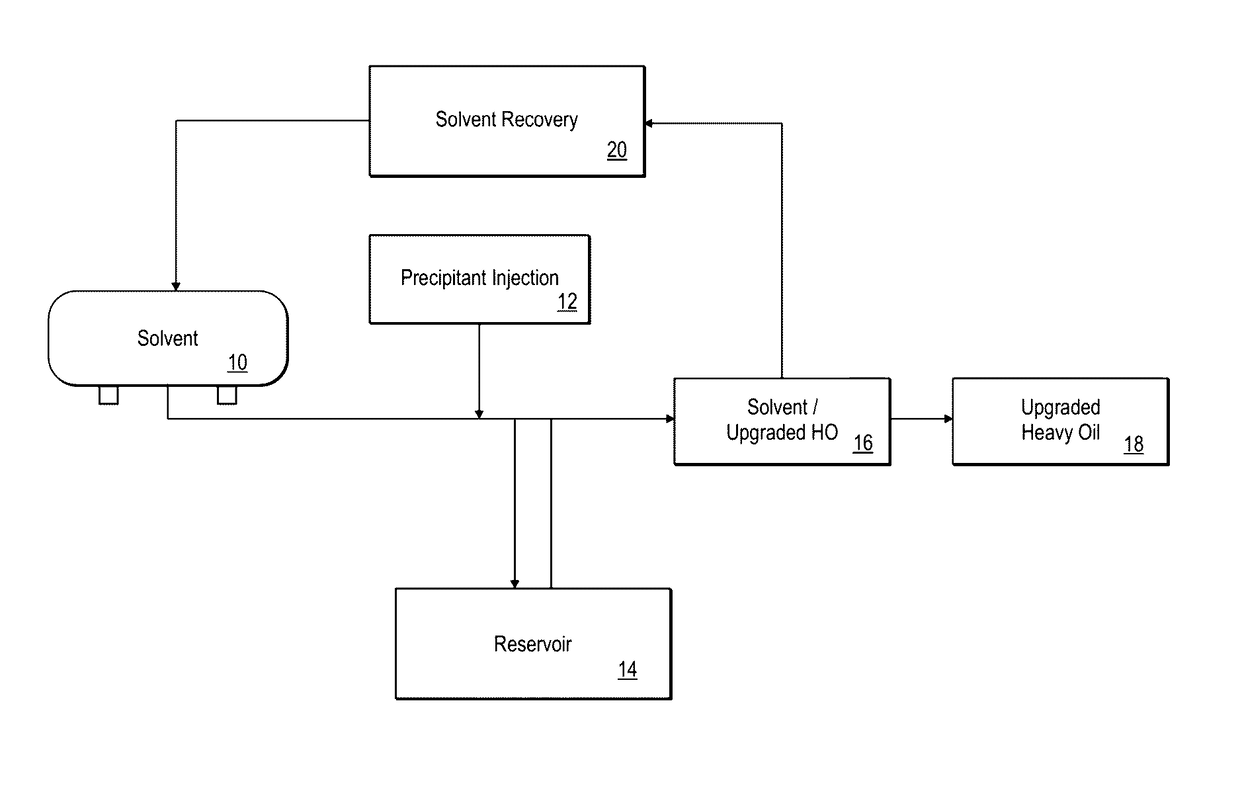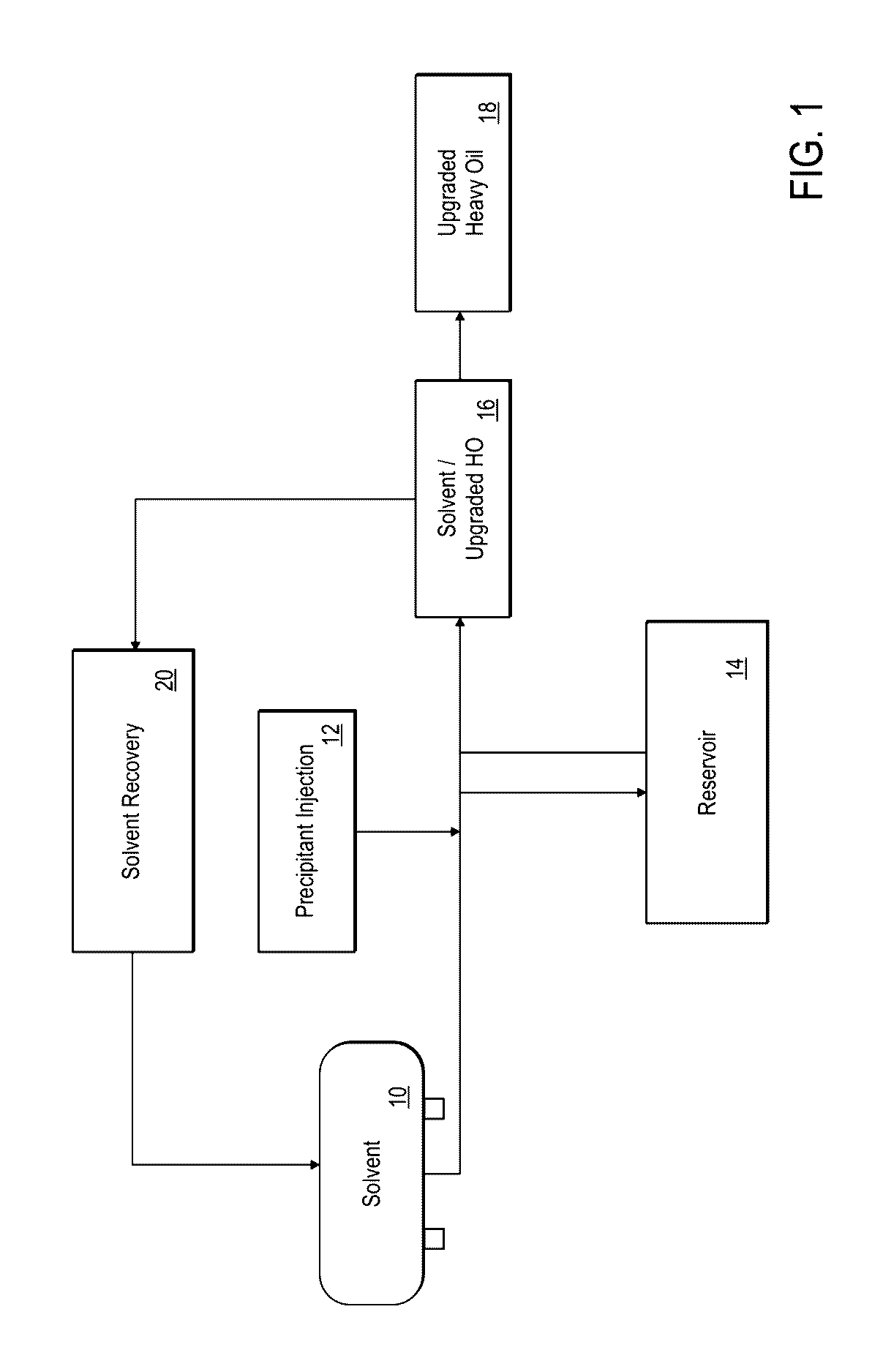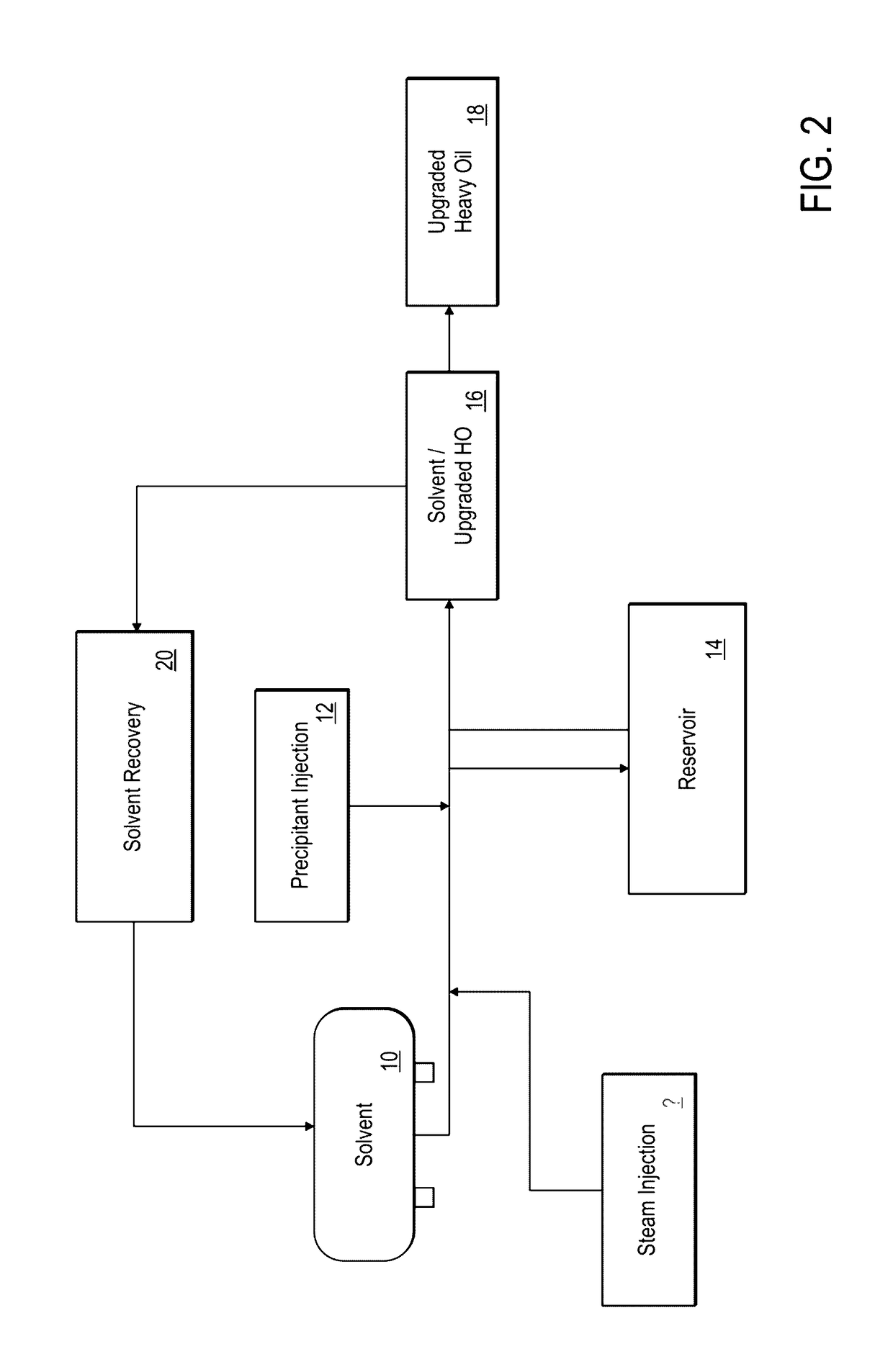Process for in situ upgrading of a heavy hydrocarbon using asphaltene precipitant additives
a technology of asphaltene and additives, which is applied in the field of in situ upgrading of heavy hydrocarbons, can solve the problems of increasing labor and equipment costs, significant challenges that have to be addressed, and large amounts of potentially expensive additives being injected through horizontal wells, and achieves the effect of reducing the solvent to heavy hydrocarbon ratio
- Summary
- Abstract
- Description
- Claims
- Application Information
AI Technical Summary
Benefits of technology
Problems solved by technology
Method used
Image
Examples
example 1
[0075]10 g of Venezuelan Crude Oil containing 72 standard cubic feet of methane per barrel were admixed with different volumes of propane (solvent) at 0.5, 1.5, 4 and 9 volume ratios and stirred at 50° C. under 900 psi of pressure for several hours. The solvent induces some asphaltenes to precipitate from oil and solvent solution. For each propane / Venezuelan Crude Oil ratio sample and after phase separation of the precipitated asphaltenes from the solution and gas stripping of the methane and propane from the solution, the API gravity of the asphaltene-depleted phase corresponding to the deasphalted oil (DAO) and the mass of the bottom phase corresponding to the precipitated asphaltenes were determined. In FIG. 3, the weight percentages of asphaltenes and the API gravities of the DAO were plotted versus the propane / Venezuelan Crude Oil volume ratio. As can be seen, when the propane / crude oil ratio is 0.5, the percentage of precipitated asphaltenes is 29% wt. and the DAO API gravity ...
example 2
[0078]2 g of Venezuelan Crude Oil (7.7° API) were mixed with 8 g of n-heptane and completely homogenized under sonication for 1 h. A sample of this blend was placed in an optical microscopy and kept at a constant temperature of 50° C. during 30 minutes. Photographs were taken at the end of the 30 min period. As can be seen in FIG. 4A, a very small amount of asphaltene particles with dimensions lower than 25 μm can be observed for this blend.
[0079]A new 4:1 Venezuelan Crude Oil-1 / n-heptane blend was prepared and 100 ppm of the polymeric asphaltene precipitant additive poly(maleic anhydride alt 1 octadecene) was added. The blend was analyzed by optical microscopy following the procedure mentioned above. As can be seen in FIG. 4B, a larger amount of asphaltenes particles can be clearly observed than in FIG. 4A.
[0080]Another new 4:1 Venezuelan Crude Oil-1 / n-heptane blend was prepared and 100 ppm of the Fe2O3 nanoparticles was added. The blend was analyzed by optical microscopy following...
example 3
[0082]0.1 grams of Venezuelan Crude Oil-1 (7.7° API) were dissolved in 10 mL of dichloromethane. This solution was analyzed by asphaltene content using the on-column filtration method reported in the literature (see, e.g., Rogel et al., Energy &Fuel, 23, 4515-4521 (2009)) at reservoir temperatures (60° C.). Next, 100 ppm of different asphaltene precipitant additives was added and the samples were analyzed for asphaltene content using the same methodology as before at the reservoir temperatures (60° C.). The results are shown below in Table 1.
[0083]
TABLE 1Percentages of Asphaltene Contents beforeand after using Asphaltene PrecipitantsAdditive% Wt. AsphaltenesNo additives10.11Benzoyl Peroxide10.834 vinyl pyridine methacrylate10.374-vinyl phenol methacrylate10.74Fe2O3 Nanoparticles10.42NiO Nanoparticles10.60Polymaleic anhydride10.26
[0084]As can be seen in Table 1, the use of 100 ppm of asphaltene precipitant additives increases the asphaltene content as determined by the on-column filt...
PUM
| Property | Measurement | Unit |
|---|---|---|
| temperature | aaaaa | aaaaa |
| temperature | aaaaa | aaaaa |
| wt. % | aaaaa | aaaaa |
Abstract
Description
Claims
Application Information
 Login to View More
Login to View More - R&D
- Intellectual Property
- Life Sciences
- Materials
- Tech Scout
- Unparalleled Data Quality
- Higher Quality Content
- 60% Fewer Hallucinations
Browse by: Latest US Patents, China's latest patents, Technical Efficacy Thesaurus, Application Domain, Technology Topic, Popular Technical Reports.
© 2025 PatSnap. All rights reserved.Legal|Privacy policy|Modern Slavery Act Transparency Statement|Sitemap|About US| Contact US: help@patsnap.com



